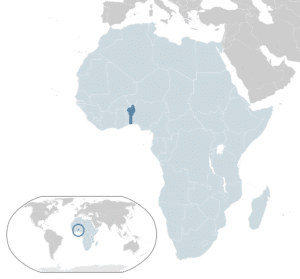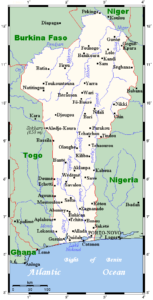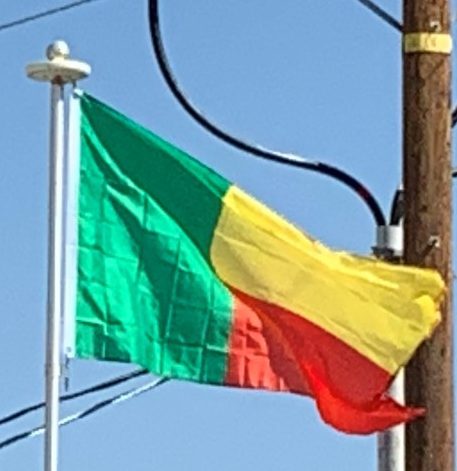Introduction:
Benin and formerly Dahomey, is a country in West Africa. It is bordered by Togo to the west, Nigeria to the east, and Burkina Faso and Niger to the north. The majority of its population lives on the small southern coastline of the Bight of Benin, part of the Gulf of Guinea in the northernmost tropical portion of the Atlantic Ocean. The capital of Benin is Porto-Novo, but the seat of government is in Cotonou, the country’s largest city and economic capital. Benin covers an area of 44,310 square miles and its population in 2016 was estimated to be approximately 10.87 million. Benin is a tropical nation, highly dependent on agriculture, and is a large exporter of cotton and palm oil. Substantial employment and income arise from subsistence farming.

The official language of Benin is French. However, indigenous languages such as Fon and Yoruba are commonly spoken. The largest religious group in Benin is Roman Catholicism, followed closely by Islam, Vodun and Protestantism. Benin is a member of the United Nations, the African Union, the Economic Community of West African States, the Organisation of Islamic Cooperation, the South Atlantic Peace and Cooperation Zone, La Francophonie, the Community of Sahel-Saharan States, the African Petroleum Producers Association and the Niger Basin Authority.
From the 17th to the 19th century, the main political entities in the area were the Kingdom of Dahomey, along with the city-state of Porto-Novo, and a large area with many different nations to the north. This region was referred to as the Slave Coast from as early as the 17th century due to the large number of enslaved people who were shipped to the New World during the Trans-Atlantic slave trade. After enslavement was abolished, France took over the country and renamed it French Dahomey. In 1960, Dahomey gained full independence from France. The sovereign state has had a tumultuous history since then, with many different democratic governments, military coups, and military governments.
A Marxist–Leninist state called the People’s Republic of Benin existed between 1975 and 1990. In 1991, it was replaced by the current multi-party Republic of Benin.
Etymology:
During the colonial period and at independence, the country was known as Dahomey. On 30 November 1975, it was renamed to Benin, after the body of water on which the country lies—the Bight of Benin. This had been named by Europeans after the Benin Empire in present-day Nigeria. The country of Benin has no connection to Benin City in modern Nigeria, nor to the Benin bronzes. The form “Benin” is the result of a Portuguese corruption of the city of Ubinu.

The new name, Benin, was chosen for its neutrality. Dahomey was the name of the former Fon Kingdom of Dahomey, which was limited to most of the southern third of the present country and therefore did not represent Porto-Novo (a rival Yoruba state in the south), central Benin (which is also dominated by the Yoruba), the multi-ethnic northwestern sector Atakora, nor the Bariba Kingdom of Borgu, which covered the northeastern district.
History:
Precolonial History:
The current country of Benin combines three areas which had distinctly different political systems and ethnicities prior to French colonial control. Before 1700, there were a few important city-states along the coast (primarily of the Aja ethnic group, but also including Yoruba and Gbe peoples) and a mass of tribal regions inland (composed of Bariba, Mahi, Gedevi, and Kabye peoples). The Oyo Empire, located primarily to the east of modern Benin, was the most significant large-scale military force in the region. It regularly conducted raids and exacted tribute from the coastal kingdoms and the tribal regions. The situation changed in the 1600s and early 1700s as the Kingdom of Dahomey, consisting mostly of Fon people, was founded on the Abomey plateau and began taking over areas along the coast. By 1727, king Agaja of the Kingdom of Dahomey had conquered the coastal cities of Allada and Whydah, but it had become a tributary of the Oyo empire and did not directly attack the Oyo allied city-state of Porto-Novo. The rise of the kingdom of Dahomey, the rivalry between the kingdom and the city of Porto-Novo, and the continued tribal politics of the northern region, persisted into the colonial and post-colonial periods.
